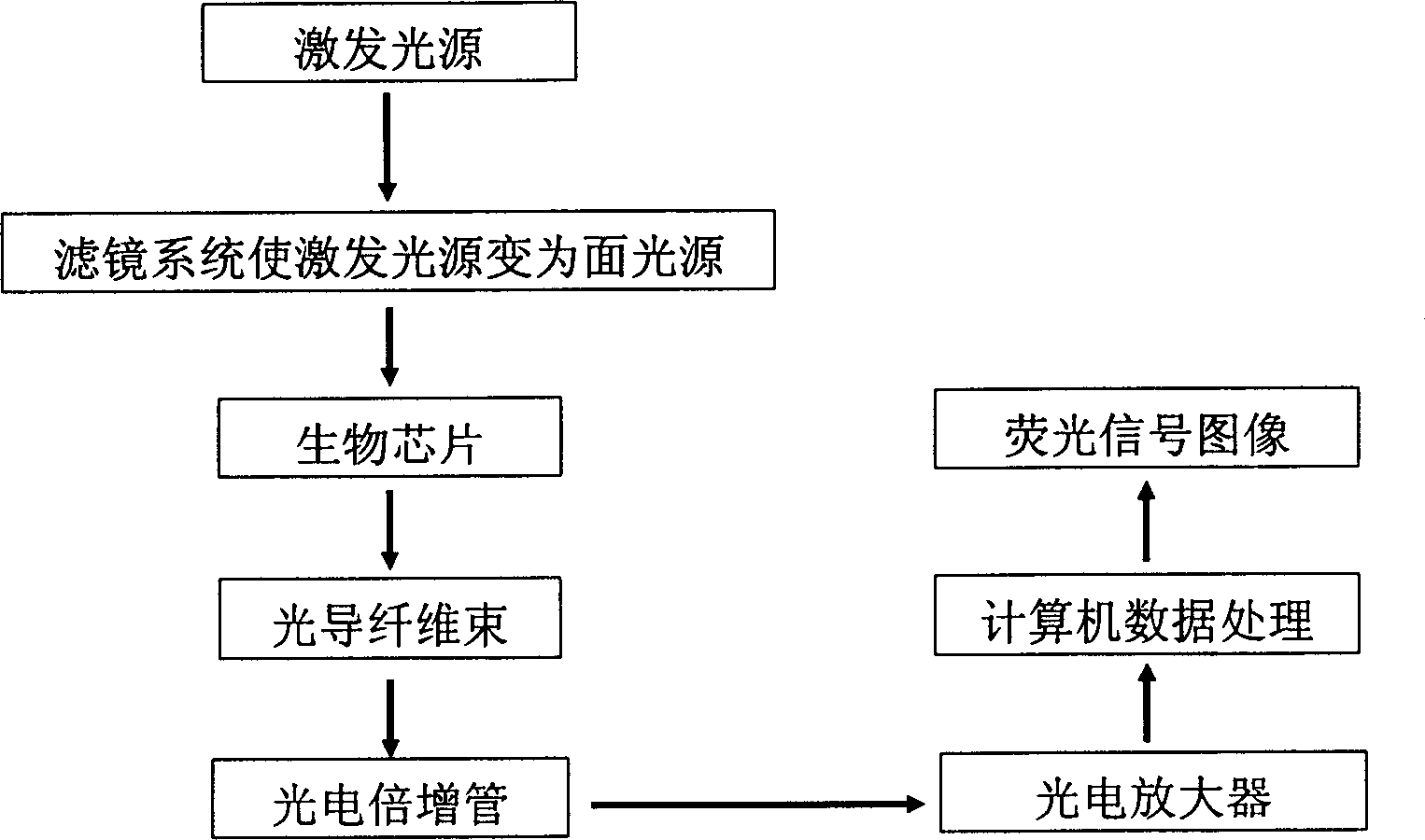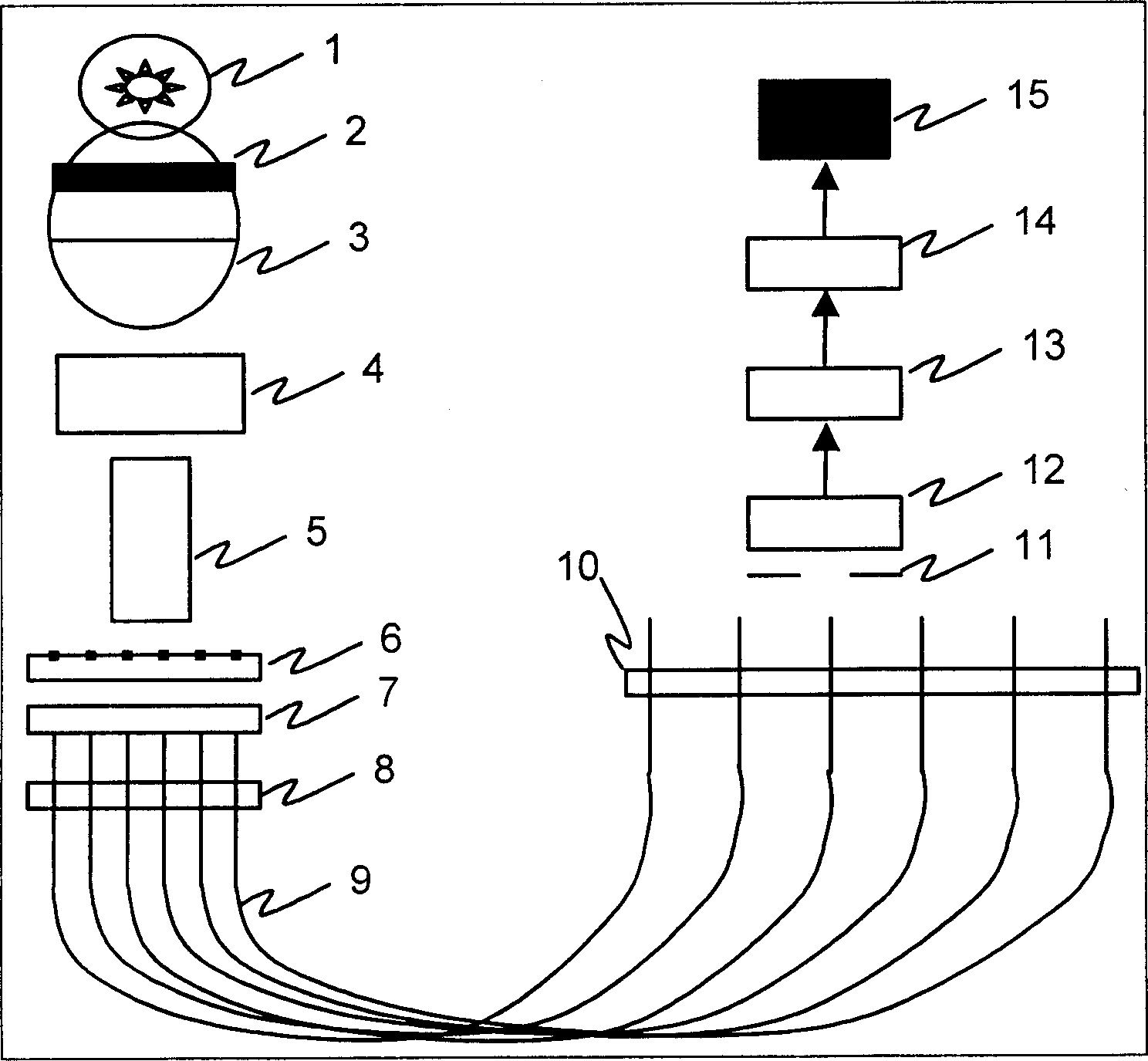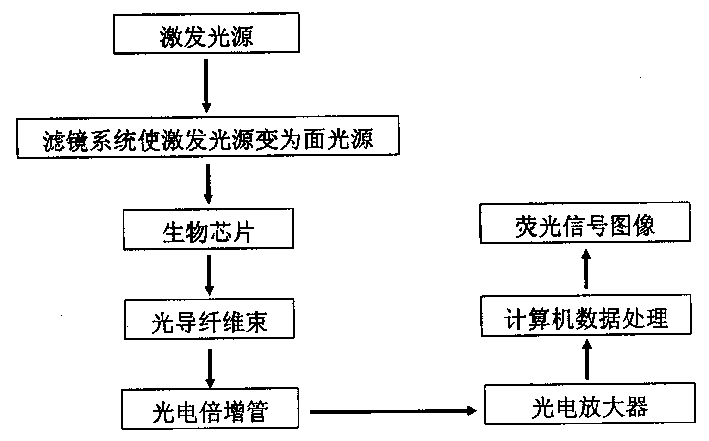Low density biochip detection method and its system
A biochip and detection method technology, applied in the direction of biochemical equipment and methods, microbial measurement/inspection, etc., can solve problems such as high background, insufficient sensitivity, and limitations of biochips
- Summary
- Abstract
- Description
- Claims
- Application Information
AI Technical Summary
Problems solved by technology
Method used
Image
Examples
Embodiment 1
[0022] The mercury arc lamp 1 is used as the laser source, and the infrared rays generated by the heat shield 2 are filtered out, and the excitation light is irradiated to the "mosaic" biochip through the plano-convex lens 3, the plano-convex cylindrical mirror 4 and the plano-convex cylindrical mirror 5 6, wherein 4 and 5 are perpendicular to each other, the purpose is to generate a surface excitation light source that can be irradiated onto the chip surface at the same time. The sample point on the chip 6 generates fluorescence under the excitation of the excitation light, and the fluorescent signal is collected by the optical fiber bundle 9 on the fixing device 8. The optical fiber group 9 forms an angle of 45 degrees with the chip 6, and a planar moving device 10 is used to move the optical fiber group 9 Scatter and fix in a certain sequence, move the planar moving device 10, so that the emitted light from the chip surface points sequentially passes through the pinhole 11 a...
Embodiment 2
[0024] Such as figure 2 As shown, the mercury arc lamp 1 is used as the laser source, and the infrared rays generated by 1 are filtered out by the heat insulation device 2, and the excitation light is irradiated to the "mosaic" ” on the biochip 6, wherein 4 and 5 are perpendicular to each other, the purpose is to generate a surface excitation light source that can be irradiated on the surface of the chip at the same time. The sample points on the chip 6 generate fluorescence under the excitation of the excitation light, and the excitation light is filtered out by the filter 7 , and the optical fiber bundle 9 is in close contact with the filter 7 . Fixing devices 8 are used to fix each optical fiber. In order to transmit the signal in the optical fiber 9 to the photoelectric conversion device 12, a planar moving device 10 is used to disperse the optical fibers 9 and fix them in a certain order, and move the planar moving device 10 so that The emitted light from the surface po...
PUM
 Login to View More
Login to View More Abstract
Description
Claims
Application Information
 Login to View More
Login to View More - R&D
- Intellectual Property
- Life Sciences
- Materials
- Tech Scout
- Unparalleled Data Quality
- Higher Quality Content
- 60% Fewer Hallucinations
Browse by: Latest US Patents, China's latest patents, Technical Efficacy Thesaurus, Application Domain, Technology Topic, Popular Technical Reports.
© 2025 PatSnap. All rights reserved.Legal|Privacy policy|Modern Slavery Act Transparency Statement|Sitemap|About US| Contact US: help@patsnap.com



